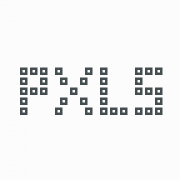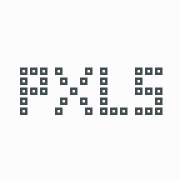How To Write A Perfect Web Designer CV In 2023?
To land a dream job and stand out among hundreds of other applicants, a web designer must work extremely hard. Furthermore, in addition to…

To land a dream job and stand out among hundreds of other applicants, a web designer must work extremely hard. Furthermore, in addition to having a good portfolio, he must be able to write an appealing CV. Do you know what to include in your CV to make it look professional?
If you are looking for a job in design, your CV must look like it was created by a top designer. Given that many applications will be submitted for each vacancy, your task will be to stand out from the crowd. You can accomplish this by creating a professional resume that highlights your most valuable skills and professional traits.
How Do You Write a CV as a Web Designer?
According to statistics, each corporate job posting attracts approximately 250 resumes. Not all of them, however, will be hired. Four to six of those applicants will be invited to an interview. And, eventually, one will get the dream job.
This happens for a variety of reasons. For example, the absence of the hiring manager’s name, poor CV design, grammar mistakes, the absence of a cover letter and a “Thank You” note after the interview, etc. As a result, it is critical to double-check that your CV is flawless and free of gaps before submitting it. To check it, visit Rated by Students’ writing services reviews website and get professional assistance.
So, where should one begin when writing a CV? Every resume has a specific structure to which you must adhere to present the necessary information logically. A standard CV includes five sections:
- Header;
- Resume summary and objective;
- Professional experience;
- Education;
- Key skills;
- Contact data.
Depending on your experience and skill level, you can add more sections that demonstrate your valuable traits as a web designer. Consider using the following sections:
- Training;
- Accomplishments;
- Projects;
- Leadership experience;
- Languages;
- Qualifications;
- Interests and hobbies;
- Publications;
- Certifications and extracurricular activities.
It may be difficult to locate all CV sections for maximum effect. You can either go to a website such as Top Writing Reviews for custom writing reviews services or try to organize everything yourself. The modern technology market offers a variety of design resources in a digital asset library, such as EpicPxls.
Having such a large library of resume templates, fonts, different graphics, and UI kits is a true treasure for an applicant. It allows you to use a variety of patterns to find a style that suits your preferences and can display the information required by employers in a way that increases your chances of being hired.
So, check out these downloadable resume templates you can use:

Here are the key elements to consider when creating a perfect web designer CV:
1. Format
Choosing the best format will allow you to showcase your skills and experience. Given that a recruiter spends approximately 7 minutes per CV on average, you should use this time to your advantage by formatting your CV data in the most convenient way for the recruiter to read. The most common CV format is “reverse-chronological.” It enables recruiters to see how valuable you may be to the company from the very first few lines.
2. Layout
CV layout is important for web developers because it allows recruiters to see how naturally you can locate information in your designs. Here are some pointers to help you create the best user experience possible for a recruiter.
- Margins. Use one-inch margins on all sides to ensure a perfect layout;
- Font. There are no strict rules indicating which font you must use. Choose the one that will give your CV a professional appearance;
- Size of the font. It is recommended that you use a text font of 11–12 points and a header font of 14–16 points;
- Line spacing. The line spacing on your CV must be 1.0 or 1.15;
- CV length. Keep in mind that a CV is not an essay. As a result, it should be as precise and informative as possible.
3. Displaying Contact Information Correctly
While describing skills, training, hobbies, and other sections will be easy for you, specifying contact information may present some challenges. One of these is a correct display of contact data. Let’s see what should come first:
- Applicant’s full name;
- Professional title (here, you should specify the position you are applying for — “web developer”);
- Phone number;
- Email address;
- Location (here, you can also specify whether you are ready to move or prefer to work remotely).
4. Appropriate Job Experience Organization
Few applicants can compete with candidates with extensive work experience. You can try to do so by making the “Experience” section look perfect. Here is how to make it stand out from the crowd:
- Position title
- Company’s name
- Dates of employment
- Key responsibilities and accomplishments.
5. Lack of Experience
Applicants are not born with a wealth of work experience. It takes time to earn one. It is frequently a significant impediment to a beginner’s web designer path to a dream job.
To get around this problem and fill the “Experience” section with data, you can start freelancing and building a portfolio of your best designs. To create them, ask your friends if they need your services or look for customers on social media.
Conclusion
If you are looking for a job in the web design sector but lack time or confidence in CV writing, keep in mind that even the most experienced designers face similar challenges at times. That is why they use resume templates, which allow them to create an ideal resume and be among the first applicants in the recruitment stack.
Visit Epicpxls and select from up to hundreds of choices available. Just type the word “resume” in the 🔍 search bar and enjoy!
Sign up for our Weekly Newsletter to be updated on our weekly blog and weekly surprises!


